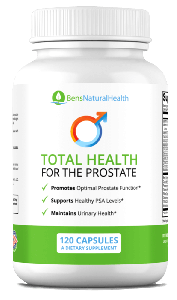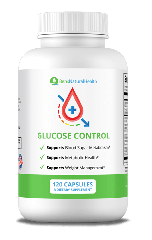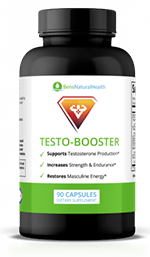- Q: What are the Types of Prostatitis?
- Q: What are the Common Symptoms of Prostatitis?
- Q: What Typically Triggers Prostatitis?
- Q: How Long Does It Take for Antibiotics to Work for Prostatitis?
- FAQs on Prostatitis Recovery Time
- Conclusion
- Our Medical Review Process
- Our Editorial Guidelines
- Medical Disclaimer
- Source
If you’ve been struggling with unexplained urinary symptoms or discomfort and suspect it might be related to an inflamed prostate gland, you’re not alone. Prostatitis is often linked to an underlying infection, yet it can manifest in different ways—acute, chronic, or even asymptomatic.
We spoke with Dr. Parra, a leading expert in urology, who shed light on the many faces of prostatitis, including why some patients experience intense symptoms while others barely notice any. In sharing his perspective, Dr. Parra also referenced several important studies that help illustrate the causes, diagnostic challenges, and management strategies for this condition.
All the information below on prostatitis recovery duration has been thoroughly reviewed to ensure its accuracy and reliability. Now let’s hear directly from Dr. Parra on the essential questions surrounding prostatitis, its recovery timeline, and what happens if it’s left untreated.
Get Your FREE PSA Lowering Diet Plan!
- Naturally lower PSA levels
- Reduce nighttime trips to the bathroom
- Enjoy better bladder control and urine flow
Q: What are the Types of Prostatitis?
Dr. Parra answers: According to the National Institutes of Health, we classify prostatitis into four main categories (1, 2). They are:
- Acute Bacterial Prostatitis: This type is not very common, but it is easier to diagnose than chronic bacterial prostatitis because it often appears with symptoms similar to a urinary tract infection. Patients who are immunosuppressed, those with benign prostatic hyperplasia, and individuals with bladder outlet obstruction have a higher risk. The organisms responsible are usually the same as those found in urinary tract infections—for example, Escherichia coli, Enterobacter, Klebsiella, and Proteus mirabilis.
- Pathogenesis: It is generally due to urinary reflux or ascending urethral infection. It can also spread from the rectal mucosa or through the bloodstream.
- Chronic Bacterial Prostatitis: According to research, around 5% of acute bacterial prostatitis cases progress into chronic bacterial prostatitis. Other patients develop the chronic form without having a full-blown acute phase. Similar to its acute counterpart, E. coli is often the culprit. It typically affects men aged 36 to 50, many of whom have a history of repeated urinary tract infections or persistent urinary symptoms. Diagnosing chronic bacterial prostatitis can be challenging; some patients even show false-negative urine cultures, leading to missed or delayed diagnosis.
- Chronic Prostatitis and Chronic Pelvic Pain Syndrome: In this category, patients often report pelvic pain that persists for an extended period without an identifiable bacterial source in their urine tests. They may also experience problems with voiding and pain in the genital area, pelvic floor, or groin. Since standard testing often yields no bacteria or cells, diagnosing and managing this condition is difficult. There is no definitive cure, but various treatments aim to alleviate symptoms and improve quality of life.
- Asymptomatic Inflammatory Prostatitis: This category is diagnosed by chance—patients do not typically experience genitourinary symptoms or complaints. In many cases, it is found during infertility evaluations or after a rise in prostate-specific antigen (PSA).
Before 1995, we also spoke of “nonbacterial prostatitis” as a separate type. Now, it’s generally included under chronic prostatitis and chronic pelvic pain syndrome.
Another type you might see mentioned in literature is granulomatous prostatitis, which involves infectious granulomas in the prostate. It is primarily caused by Mycobacterium tuberculosis and certain fungi and is very uncommon.
Q: What are the Common Symptoms of Prostatitis?
Dr. Parra answers: Patients can experience a wide variety of signs and symptoms, depending on the specific type of prostatitis. Let’s break down the main symptom patterns:
Acute Bacterial Prostatitis Symptoms
- Fever and chills: Common in bacterial infections due to the body’s immune response.
- Myalgias and arthralgias: Muscle and joint pain can arise from systemic inflammation.
- Malaise: A general feeling of weakness or not being well.
- Perineal pain: Often felt in the groin or perineal area, worsening during a digital rectal exam or prostatic massage.
- Dysuria: Pain or burning when urinating.
- Increased urinary frequency: Feeling the need to urinate more often, though volume may be normal.
- Urinary urgency: A sudden, strong urge to urinate, often producing only a small amount of urine.
- Incomplete voiding: Patients may struggle to fully empty the bladder.
- Weak urinary stream: Decreased force and thickness of the urine stream, sometimes followed by dribbling.
- Nocturia: Frequent urination at night.
- Abdominal or low back pain: Pain is usually near the pubic region; back pain is less common.
- Urethral discharge: Can be present if the cause is a sexually transmitted infection.
Chronic Bacterial Prostatitis Symptoms
- Intermittent dysuria: Burning or pain during urination that comes and goes.
- Intermittent obstructive symptoms: Episodes of incomplete voiding, weak stream, frequent urination, and nocturia that may subside and then recur.
- Recurrent urinary tract infections: Patients often face repeated UTIs, with temporary relief after antibiotic therapy.
Chronic Prostatitis and Chronic Pelvic Pain Syndrome Symptoms
- Pelvic pain: Can occur in the low abdomen, perineum, groin, scrotum, or testicles. Officially diagnosed if pain lasts at least three months in a six-month period.
- Dysuria: Burning while urinating, but standard tests might show no infection.
- Increased urinary frequency: Similar to obstructive symptoms, leading to frequent daytime trips to the bathroom and waking at night (nocturia).
- Incomplete voiding: A constant feeling that there is still urine left in the bladder.
- Pain upon ejaculation: A result of chronic prostate inflammation.
- Erectile dysfunction: Can occur, though psychological factors must also be ruled out.
Q: What Typically Triggers Prostatitis?
Dr. Parra answers: Prostatitis is essentially an inflammation of the prostate gland. Most cases are triggered by bacterial species entering the prostate. In bacterial prostatitis, the source can be a urinary tract infection or sexually transmitted infection. This is why it’s common to find a history of recurrent UTIs or infections acquired through sexual contact.
When no obvious urogenital infection exists, we might consider either a contiguous spread (from nearby tissues) or hematogenous spread (through the bloodstream). A minority of prostatitis cases are fungal or viral—these usually appear in individuals with reduced immune function, such as those with HIV (5).
Even in chronic pelvic pain syndrome, patients may not have active bacterial infections. In some instances, symptoms are triggered by neuromuscular issues or a congenital problem that causes urine to back up into the prostatic ducts.
Q: How Long Does It Take for Antibiotics to Work for Prostatitis?
Dr. Parra answers: The prostatitis recovery duration depends heavily on which type of prostatitis you have (6, 7):
Acute Bacterial Prostatitis Recovery Time
Bacterial infections, such as acute bacterial prostatitis, are more straightforward to resolve, sometimes with a single antibiotic. In a dedicated chapter of the Guide to Antibiotics in Urology, Dr. Paolo Verze and collaborators mention that most patients are clinically stable. The disease is usually uncomplicated with a short recovery time, and the infectious agent is Escherichia coli in up to 80% of cases.
Not all antibiotics reach the prostate tissue in high concentrations, so fluoroquinolones are usually chosen to treat this ailment. It is an antibiotic that increases its concentration in the prostatic fluid shortly after starting oral administration. Acute prostatitis recovery time is usually 2-4 weeks, but you may see symptomatic improvement before that time.
- Most patients are prescribed one or two antibiotics, and treatment typically spans up to 28 days, depending on the organism.
- For certain infections like gonorrhea, the course may be shorter—sometimes a single dose of two antibiotics or 7 days of doxycycline.
- Generally, you should start seeing symptom relief after 1 or 2 weeks of therapy.
- Severe cases (toxic appearance or sepsis signs) might require hospitalization and an extended antibiotic course.
Chronic Bacterial Prostatitis
When prostatitis symptoms last 3 months or more, the infection requires a different treatment, even if the infectious agent is the same. So, chronic prostatitis recovery time can be extended due to sustained prostatic tissue inflammation.
In his dedicated chapter on bacterial prostatitis, Dr. Paolo Verze explains that prostatic tissue starts to behave differently after three months of inflammation. Active transport is affected, and the capillaries lose their permeability. Thus, reaching effective antibiotic concentrations in the prostatic fluid is more complicated.
That said, to accelerate your recovery time, it is fundamental that you do not miss one single dose of antibiotics during the whole period prescribed by your doctor. Doing so may drastically reduce antibiotic concentration in the prostate and make your treatment fail.
- Chronic bacterial prostatitis is often addressed with long-term antibiotics (about 4 to 6 weeks).
- Throughout therapy, you may also receive alpha-blockers and nonsteroidal anti-inflammatory drugs to ease symptoms.
- Some chronic cases can recur, so the exact recovery timeline varies. It’s vital to keep in close contact with your doctor for a more individualized outlook.
Nonbacterial Prostatitis Recovery Time
Nonbacterial prostatitis is also known as chronic prostatitis/chronic pelvic pain syndrome (CP/CPPS). In this case, recovery time is even more difficult to predict than chronic bacterial prostatitis because multiple factors influence the disease and its prognosis. Some authors describe pelvic floor dysfunction as one of the leading causes. Others show it is a combination of neuropathic pain and obstructive voiding due to BPH. Psychological factors also play a significant role.
In most cases, the disease can be controlled and the symptoms subside, but a complete recovery without a relapse might not be possible in all patients. Also, you may need to undergo several treatment options with your healthcare provider before finding the one that works best for you. It is an individualized treatment that may take very long to establish, but once you understand your symptoms and their triggers, the process will be easier to handle.
There are many recent studies on CP/CPPS, one of which was published in the World Journal of Urology. Here, the authors describe that multi-modal treatment works best for patients with CP/CPPS, mainly when psychological factors are linked to the cause of pain.
- Chronic pelvic pain syndrome patients only benefit from antibiotics if there’s an inflammatory component.
- Treatment usually includes a combination of alpha-blockers and anti-inflammatory agents to treat pain symptoms and voiding problems.
- Some patients may benefit from pelvic floor muscle physiotherapy, which shows marked improvements in many patients.
- Depression and neuropathic pain should also be addressed in patients with neurologic etiologies.
Q: Does prostatitis ever go away completely?
Dr. Parra answers: It largely depends on the type:
- Acute Bacterial Prostatitis: Often resolves with a proper 28-day antibiotic regimen. However, if complications like urosepsis occur, recovery might take longer and becomes more complex.
- Chronic Bacterial Prostatitis: It can go away if you adhere closely to the 4- to 6-week treatment. Still, recurrence is possible in some men.
- Chronic Prostatitis Recovery Time and Chronic Pelvic Pain Syndrome: This condition can be particularly challenging; there’s no definitive cure for many patients. Often, various strategies are used to manage symptoms, but complete resolution may not always happen.
Q: What happens if prostatitis is left untreated?
Dr. Parra answers: The only form that might not demand active treatment is asymptomatic prostatitis. Yet some professionals still advise treating it if found, believing chronic inflammation might raise the risk of prostate cancer in the long run.
For acute bacterial, chronic bacterial, and chronic pelvic pain syndrome (9, 10):
- Worsening symptoms: They can intensify, leading you back to urgent medical care.
- Antibiotic resistance: Inadequate or partial treatment can contribute to resistant bacterial strains.
- Progression to chronic prostatitis: Acute cases can transition into chronic forms if left unaddressed, making them harder to treat.
- Sepsis risk: Particularly in immunocompromised or severely ill patients, uncontrolled infection can escalate into urosepsis.
- Prostate stones: Chronic inflammation may lead to prostatic calculi, which may slightly raise the risk of prostate cancer in the long term.
FAQs on Prostatitis Recovery Time
Q: Does age influence how long it takes to recover from acute bacterial prostatitis?
Dr. Parra answers: In most cases, the prognosis in acute bacterial prostatitis remains unchanged regardless of the patient’s age. However, younger patients may sometimes experience faster resolution of their symptoms due to different causes.
Younger patients are more frequently diagnosed with sexually transmitted infections, which are likely the cause of acute bacterial prostatitis in their case. Such infections can be complicated sometimes, but they are usually resolved with one week of antibiotics and sometimes a single high dose, depending on the treatment protocol.
These patients usually have a more responsive immunologic system than senior men, who may take longer to respond to treatment. Patients with a deficient immune system are more commonly affected by infrequent bacteria that do not respond very well to the usual treatment. They may require a culture of prostatic fluid to find the most appropriate antibiotic course.
Additionally, a recent study published in the Biological and Pharmaceutical Bulletin found that people taking many drugs simultaneously may take longer to improve their lower urinary tract symptoms. Those taking anticholinergic drugs, such as Diphenhydramine and Doxylamine, are more commonly affected by LUTS and tend to experience more flare-ups and relapses.
Despite this, most patients with acute bacterial prostatitis respond to treatment after a few days of antibiotics. The usual treatment duration is one week, but it may sometimes extend to four weeks.
Q: Are follow-up tests necessary to confirm full prostatitis recovery, and if so, when should these be scheduled?
Dr. Parra answers: Sometimes, follow-up tests are required to confirm full prostatitis recovery. It depends on the type of prostatitis and the infectious agent that colonizes the prostate. It may also depend on the patient’s immunity status and general health.
Patients with a responsive immune system, a younger age, and an isolated case of acute prostatitis might not always require a follow-up test. There’s an exception in this case if a sexually transmitted disease has been detected. When an STI is associated with prostatitis, there is a higher risk of recurrences depending on how the patient and his sexual partners adhered to the treatment and the doctor’s recommendations. Thus, your healthcare provider may recommend a urine culture or a urethral culture 48 hours after finishing your antibiotic treatment.
Patients with a compromised immune system and those with unusual infectious agents such as Pseudomonas or Mycoplasma may also require a follow-up test to ensure that the prostate fluid is free of infection. Similarly, patients with chronic prostatitis usually need a follow-up test because their risk of relapse and incomplete recovery is higher.
Review studies on chronic prostatitis management gather data from different lines of research and how the follow-up protocol they establish with their patients. It ranges between 3 and 6 months after completing the treatment, and it is usually done with a prostatic fluid culture, a urine culture, or a prostatic ultrasound, depending on each case.
Q: How can lifestyle factors like smoking or diet impact my prostatitis recovery duration?
Dr. Parra answers: Lifestyle factors can sometimes affect your recovery rate and symptomatic improvement, especially if you experience lower urinary tract symptoms. Some habits and food choices can worsen your prostate inflammation or cause irritation in your lower urinary tract, extending the recovery period and affecting your quality of life. The risk is even higher in patients with a chronic condition, such as chronic pelvic pain syndrome.
A study published in the journal Urology reported the results of a validated questionnaire filled by nearly 300 patients with chronic prostatitis/chronic pelvic pain syndrome. According to their results, 47,4% of patients reported that consuming certain foods and beverages was associated with worsening prostatitis symptoms. The most common are spicy foods, alcoholic drinks, coffee, and tea. The same study found associations with foods and drinks that reduced the symptoms, which include herbal teas, docusate, water, and psyllium.
Another study was made on smoking and its association with acute and chronic prostatitis. After analyzing data from over 8000 patients, the researchers report that smoking is associated with acute prostate inflammation and can also influence chronic prostatitis. Thus, the recommendation of quitting smoking may come in handy to accelerate your recovery if you recently started treatment for acute or chronic prostatitis.
Q: Are there any non-antibiotic therapies (such as physiotherapy or biofeedback) that could shorten the overall prostatitis recovery period?
Dr. Parra answers: Yes. There are many non-pharmacological therapies we can use for patients with prostatitis. For instance, Anderson and collaborators published a protocol for pelvic floor physical therapy in patients with CP/CPPS in the Journal of Urology. According to their research, physiotherapy improved symptoms for 72% of patients after one month of treatment.
Alternative therapies, such as acupuncture, can also be used. Depending on the acupuncturist’s expertise and technique, acupuncture can sometimes be effective. Studies show that symptom improvement with acupuncture can have a long-term effect on the patient’s quality of life over a 56-week follow-up period.
Psychological interventions can also be beneficial when the disease has a solid psychosocial aspect. Other modalities, such as transrectal thermotherapy and extracorporeal shockwave lithotripsy, have also shown promising results in studies, especially in the field of chronic non-bacterial prostatitis.
When considering pharmacological treatment, we should also mention that it is not limited to antibiotic therapy. Patients can also benefit from alpha-blocker therapy, anti-inflammatory treatment, and drugs for neuromodulation, depending on the etiology and comorbidities. Herbal treatments with similar anti-inflammatory, antioxidant or immune-enhancing properties can also be considered a part of the therapeutic tool.
Q: Is it necessary to modify or pause regular exercise routines or sports activities while recovering from prostatitis?
Dr. Parra answers: Modifying or pausing regular exercise routines or sports is not always required for prostatitis treatment. However, some sporting activities may worsen symptoms and prolong prostatitis recovery. These should be avoided until the patient fully recovers.
For instance, sports that include bicycle riding and horseback riding can trigger prostatic pain due to frequent pressure on the pelvic floor. Some authors consider these risk factors for chronic prostatitis, along with driving for more than one hour a day, especially on motorcycles. However, their research also includes sedentary behavior as a risk factor that affects the recovery rate of chronic prostatitis patients. Thus, staying active is a good idea, but we should choose a type of activity that does not put extra pressure on the pelvic floor area.
Instead of bicycle riding or sports that involve horseback riding, patients may increase their physical activity levels by brisk walking, adopting a moderate-weight weightlifting routine, engaging in water sports, dancing, or yoga, as long as these activities don’t overstretch the pelvic floor muscles.
Conclusion
Prostatitis recovery duration varies, and the outcome depends on multiple factors. Here’s a quick recap:
- Acute bacterial prostatitis: Often resolved with a 28-day antibiotic course but can become serious if complicated by prostatitis abscess or urosepsis.
- Chronic bacterial prostatitis: Usually treated over 4 to 6 weeks. Recovery is possible, though relapses can occur.
- Chronic prostatitis and chronic pelvic pain syndrome: This condition can be frustrating to manage, and while there is no definitive cure, treatments aim to significantly ease symptoms.
- Asymptomatic prostatitis: Typically discovered accidentally; some experts suggest treating it to avoid potential long-term risks.
In all but the asymptomatic type, consistent treatment is important. Delaying or skipping medication can lead to complications or more difficult-to-treat chronic states. If you suspect prostatitis or struggle with symptoms, consult your doctor promptly for accurate diagnosis and tailored care.
Our Medical Review Process
At Ben’s Natural Health, we prioritize transparency, accuracy, and scientific integrity. Every piece of content is carefully developed by medical professionals and undergoes a thorough review every 12 to 24 months. This ensures our information remains up-to-date, accurate, and rooted in credible, evidence-based research. We reference only peer-reviewed studies from trusted medical journals, providing full citations and direct links to foster trust and confidence. Learn more about our medical review process and research standards.
Our Editorial Guidelines
For over 25 years, Ben’s Natural Health has been a trusted source of scientifically accurate information on natural health. Our editorial guidelines are designed to uphold the highest standards of quality and integrity. Every article is written by qualified professionals—including doctors, dietitians, nutritionists, fitness experts, and surgeons—and undergoes independent quality checks. We emphasize transparency by clearly displaying contributor credentials and biographies at the beginning of each article. Read our editorial guidelines to learn more about our content creation and fact-checking process.
Medical Disclaimer
The information on this blog is for educational purposes only and should not be considered a substitute for professional medical advice, diagnosis, or treatment. While our content is reviewed and authored by licensed medical professionals, it may not address your specific health concerns. Always consult your primary care physician or a qualified healthcare provider before making any medical decisions. Never disregard or delay seeking professional medical advice based on the information provided here. Your use of this blog and its content is at your own risk.







